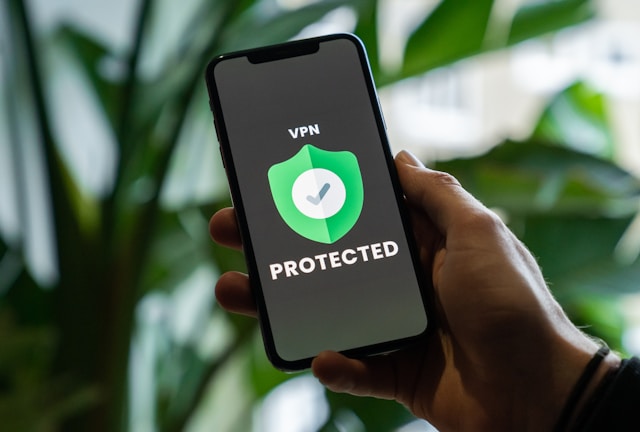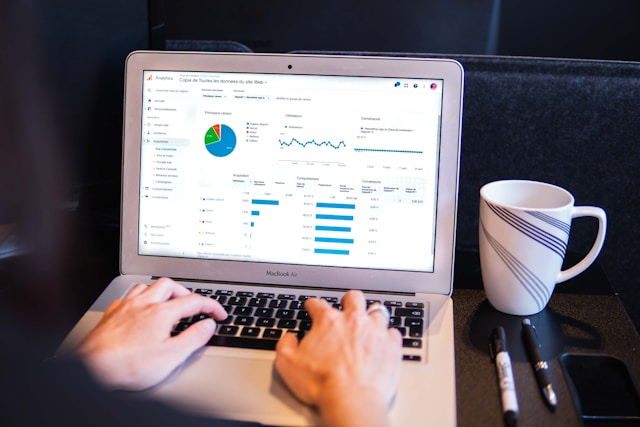Do you want to know how are IP addresses assigned to different internet users? Understanding the process clues you in on how the technology works. This is ideal for businesses and marketers who want to participate in geolocation marketing.
Several organizations control the flow of IP addresses. We’ll share the role these organizations play in disturbing IP addresses to ensure they are unique. This will help you understand the relevance and IP accuracy when targeting user mobile devices. Read on to learn how are IP addresses automatically assigned.

Table of Contents
How Are IP Addresses Assigned?
Are you interested in learning how IP addresses are assigned? A hierarchical system assigns IP addresses that involve several organizations and protocols. This ensures there’s enough uniqueness and efficient allocation.
Here’s an overview of how is your IP address determined:
- Internet Assigned Numbers Authority (IANA): The IANA is responsible for global coordination of IP addressing. They are also part of ICANN (Internet Corporation for Assigned Names and Numbers). Furthermore, the IANA manages and allocates IP address blocks to Regional Internet Registries (RIRs).
- Regional Internet Registries (RIRs): There are five RIPs, each serving a different part of the world. For example, the American Registry for Internet Numbers (ARIN) is for North America.
- Internet Service Providers (ISPs) and organizations: ISPs and other organizations receive IP address blocks from RIRs. They manage and allocate these addresses to end-users. These can include businesses, residential customers, and data centers. ISPs often use Dynamic Host Configuration Protocol (DHCP) to assign IP addresses dynamically to their customers. The dynamic IP addresses approach ensures there’s an element of randomness.
- End users and devices: End users and devices get their IP addresses from their ISP or network administrator. The two main types of IPs are static IP address and dynamic IP address.
Overall, the assignment of IP addresses is a coordinated process involving global, regional, and local organizations. This ensures that every device connected to the Internet has a unique address, which enables efficient and reliable communication.

Do IP Addresses Change With Location?
An IP address can change with location if you connect to the internet from a different network. When wondering do IP addresses change with location, you do get a new IP address. You can check this for yourself with an IP lookup tool.
Therefore, a single user can have different types of IP addresses throughout the same day. However, this will not impact your marketing if you focus on users within a particular geographic location.

How Does IPv6 Compare to IPv4
It’s worth noting that there are two main systems for how the IP addressing system works, which are IPv6 and IPv4. IPv6 uses a 128-bit address, while IPv4 uses a 32-bit address. This means the former has a more sophisticated communication protocol. Here are the advantages of IPv6:
- Security: There are more security features with IPv6 because there’s an ability to include privacy extensions and offer secure routing. Therefore, you can expect fewer security breaches when using IPv6 over the older version.
- Routing: IPv6 provides several features that enhance routing efficiency on the internet compared to IPv4. These include the elimination of NAT, streamlined routing headers, and the Neighbor Discovery Protocol (NDP). Other benefits include hierarchical addressing, subnetting, and route aggregation.
- Autoconfiguration: The Dynamic Host Configuration Protocol (DHCP) server is the tool for handling IP address assignment. However, the device can configure the address using Stateless Address Autoconfiguration (SLAAC).

Can You Change Your IP Address?
Yes, you can change your IP address, and the method for doing so depends. This depends on if you are changing public IP addresses or private IP addresses. Here are some common ways to change a private IP address:
- Reconnect to a network: Disconnect and reconnect to your Wi-Fi or Ethernet network. This can often result in a new IP address that your router’s DHCP server assigns. This is a fast and easy way to change the IP address.
- Restart your device: You can restart your computer, smartphone, or other device. This can also lead to a new IP address. However, it doesn’t work every single time, so it’s a good idea to use a tool to check manually.
- Configuring network settings: You can manually set a new IP address in your device’s network settings. However, ensure the address is within the appropriate range for your network and does not conflict with other devices. You’ll need more technical expertise for this strategy compared to the other tips in this section.
Now let’s consider how to change your public IP address:
- Reboot the modem or router: Consider restarting your modem and router. Many Internet Service Providers (ISPs) assign dynamic IP addresses that can change when you restart the modem.
- Request a change from the ISP: Take the time to contact your ISP and request a new IP address. Some ISPs may be willing to assign a new IP address to keep their customers happy.
- Use a VPN: Take advantage of VPNs, which mask your real IP address with one from the VPN server. This effectively changes your public IP address, as seen by websites and online services.
- Use a proxy server: Proxy servers route internet traffic and change the apparent IP address.

What Is a Static IP Address?
A static IP address is a fixed IP address manually configured for a device and does not change over time.
Therefore, you can make use of static addresses to track individual customers. However, you must identify the difference between static and regular IP addresses.
Here are the main characteristics of a static IP address:
- Permanence: Unlike dynamic IP addresses, which can change when a device connects to the network, a static IP address remains constant. This is ideal for geolocation marketers targeting users based on their IP address.
- Manual configuration: A network admin manually assigns static IP addresses, or you can configure them in the device’s network settings.
- Predictability: Since the IP address does not change, it is easy to locate and access the device on the network consistently. However, users can switch from static to dynamic IP addresses.
Furthermore, using static IP addresses has several drawbacks. These include security risks since it makes their connection to the Internet more predictable.
Also, some ISPs may charge extra for using a static IP address. It’s worth knowing this when learning how are IP addresses chosen.

Do You Need To Know How IP Addresses Change?
Yes, you need to know how the IP address changes as you track your target audience. This is vital when creating geolocation marketing campaigns. You can’t use a single IP address to track one potential customer since it can change.
Now that you know how are IP addresses assigned, make sure you find the correct tracking technology. There are high-quality software solutions that allow you to track IP addresses effectively.
Consider checking out geoPlugin, which uses IP geolocation and reverse IP geocoding technology. The technology allows you to track IP addresses down to the city users are in. So what are you waiting for? Sign up today to check out geoPlugin for yourself.











